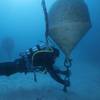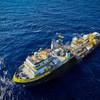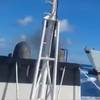Brazil Shipbuilding: Soaring to New Heights
The recent growth of the Brazilian shipbuilding industry, with the construction of more than 20 new shipyards and efforts to modernize older shipyards, has highlighted the need for more efficient ship design and construction methods.
With the increased reliance on production line automation, ship design software has become even more important. Maritime Reporter and Engineering News spoke with Mr. Bruno França,CEO of Brazilian IT company Sincronia and ShipConstructor representative in Brazil, about the relevance of CAD based ship design software in the new Brazilian shipbuilding industry.
Please tell us a little about yourself and your company (Sincronia)?
My name if Bruno França, I am CEO of Sincronia. I am an Aeronautical Engineering Graduate from Imperial College London and early on worked in the offshore engineering market as a structural engineer, before migrating to IT.
Sincronia is focused on the IT demands of engineering intensive large scale infrastructure and equipment projects. Our market segments include shipbuilding, offshore construction and industrial plant.
Our range of product and services include:
PLM/Document Management, Enterprise Search and Design Review: Sincronia IFM and Autodesk Navisworks, 3D design, production detailing and integrated CAD/CAM tools for the Shipbuilding and Offshore market: Shipconstructor & Maxsurf Suite, along with consultancy, training and implementation services.
What is the relationship between your company and ShipConstructor?
We are qualified representatives for ShipConstructor and Maxsurf in Brazil.
Could you explain to us the concept of ShipConstructor design software?
ShipConstructor is an AutoCAD based shipbuilding CAD/CAM software suite that provides detail design and modeling tools for production engineering of marine structures. ShipConstructor captures all information relevant to the 3D design, manufacturing, maintenance, repair and refit of complex marine projects inside of a Marine Information Model (MIM). At the heart of the model is a single relational database residing on a Microsoft SQL Server that can be integrated with related business processes and applications. ShipConstructor’s unique software architecture and AutoCAD foundation provide significant competitive advantages.
What would you consider the software´s main competitive advantages?
Shorter implementation time, speed to proficiency and lower maintenance/administration costs, complemented with first-class technical support. ShipConstructor is built on top of AutoCAD, one of the world's most widely used CAD programs. The AutoCAD foundation provides a population of skilled workers already familiar with the basic tools and general look and feel of the software. Additionally, ShipConstructor is a suite of products targeted specifically at the shipbuilding and offshore industries. This basic philosophy behind the technology allows clients to directly interact with the 3D product model of a ship or offshore project in a manner that is natural for their business. Users with a solid foundation of AutoCAD skills and a decent understanding of the industry are armed with the tools required to quickly become proficient with the software. Competing products are widely recognized as requiring as much as 400% greater training to achieve the same level of proficiency.
What are ShipConstructor´s range of applications?
ShipConstructor offers a complete package covering all disciplines (structure, pipe, hvac, electrical, welding) for production detailing software as well as tight integration with Maxsurf Suite for initial design capability. Maxsurf is the most commonly used initial design suite in Brazil.
How long has ShipConstructor been in the Brazilian market?
The software has been used since 2008.
Could you give us a short description of the scope of CAD based ship design software business market in Brazil?
Currently the main activity we see in Brazil is project detailing to attend local workshop skills as well as PETROBRAS/TRANSPETRO specifications and requirements. We see few yards actually developing their own internal design capability with most designs still being imported from foreign design offices and technology partners.
What is the current market demand for ShipConstructor?
ShipConstructor is being widely adopted by both Brazilian yards, engineering design offices as well educational institutions. We have a specific educational package for technical colleges and universities and are investing in helping them get up to speed to train students best-practices in shipbuilding using 3D CAD/CAM software.
What is the current market demand for your specific services (Sincronia)?
We see strong demand both for ShipConstructor training and consultancy services as well as our PLM/Document Management side of the business. For the latter the demand is much wider covering other segments such as onshore, industrial and nuclear plant.
Who are ShipConstructor´s main competitors in Brazil?
In the shipbuilding market our main competitors are FORAN/SENER, AVEVA Marine and Intergraph SmartMarine.
How do you view the next five-year business scenario for ship design in Brazil?
We see one of the main challenges will be training local resources to use CAD/CAM software effectively, which is why we are so bullish regarding ShipConstructor as it easily outperforms rival products in ease of use and training/setup time.
What are the current world market trends in CAD based ship design?
Emerging market shipyards such as Brazil and India are looking for CAD/CAM software that out-of-the box is easier to implement, train and maintain. In comparison with that point of view we see some large Korean yards having customized so much of their original commercial software that they are stuck, facing huge migration costs to adopt newer technology from the same vendor. China is a place where everyone is fighting to get some significant market share and still preserve their IP. Europe and the US are pretty much saturated markets.
Production line automation is considered an advantage by most major shipbuilders. How does ShipConstructor software interact with the automation hardware?
ShipConstructor software offers excellent production automation integration with automated nesting as well as full support for cutting machines (cutting, marking, bevel), generating native CNC code, as well as integration with pipe bending machines. One of the key elements of the software is the intelligent association between production output and the 3D model, so that, for example, if a given structural part is modified, an associated nest drawing will be notified and updated as well.
Which are the main shipyards using the ShipConstructor design software in Brazil?
Our main clients are: Estaleiro Atlântico Sul (Brazil’s largest shipyard), Estaleiro INACE, ETP-ENG, Consunav and Kromav Engenharia.
Is ShipConstructor also present in other shipbuilding segments such as cruise ships, yachts and military craft? Do you believe it can enter these market segments in Brazil?
Estaleiro INACE is already using ShipConstructor on yachts and patrol boats for the Brazilian Navy. We have also been approached by other Brazilian yards which have shown interest in using the software for future Brazilian Navy projects. An important point to note is that ShipConstructor currently dominates the US Navy shipbuilding program, with over 80% of current projects using the software as the CAD/CAM tool of choice.
Do you have an idea of how many ships built in Brazil were designed using the ShipConstructor software recently?
ShipConstructor is being used at EAS for the construction of 10 Suezmax tankers, 5 Aframax tankers as well as the P-55 semi-sub hull platform. At Inace shipyard it has been used on fast-supply boats, navy patrol boats and commercial yachts. At ETP-ENG it is being used for PSVs (Ulstein based design).
It is also worth mentioning that several yards in Brazil such as the Detroit shipyard have used project detailing services from Guido Perla (PSVs) and Robert Allan (Tugs), all executed in ShipConstructor CAD/CAM software.
What kind of support do you or ShipConstructor offer to the companies that use the software?
We offer local training and technical support. ShipConstructor Software Inc. is recognized by the industry as offering benchmark first-class support.
What is the expected growth for the ShipConstructor software sales in Brazil?
In two years we overtook the installed base of our main competitor who had been operating in Brazil for over 10 years. We expect to double our installed base in the next two years.
How would you position ShipConstructor in the world ship design software market?
It is achieving significant success in emerging markets such as Brazil and dominates the US Navy market which gives it a solid revenue base, independent of global crisis , double-dip recession etc. for future growth.
What are your views on the growth of Brazilian shipbuilding and how does that affect your product?
We are very pleased to be actively taking part in the revival of the Brazilian shipbuilding industry. My partner and father Coaracy da Silva was actively involved in the first cycle of the Brazilian Shipbuilding industry 60s-80s, when Brazil achieved international recognition as one of the leading shipbuilding nations. Seeing his son directly involved in this second cycle has been extremely gratifying from his perspective. ShipConstructor has a very strong support structure in Brazil and I believe this will be very important to the Brazilian shipbuilding industry. As a result of the growth of Brazilian shipbuilding industry and the efficiency and quality of our product we are confident we will double our installed base in Brazil within the next two years.
What would you consider the current market challenges Brazilian shipbuilding is facing? In which way can the ShipConstructor software help to overcome these challenges?
Training local resources is the key choking point. As I mentioned before we are actively working with state and federal institutions to offer training programs for both technical colleges and universities. We are confident local shipyards will increasingly see the benefit of using the most effective and easy to use CAD/CAM software as being a key factor for their bottom line, especially when compared to overly complex software that comes packaged with heavy consulting service/customization requirements. A recent story illustrates this point: we were talking to a Brazilian shipyard owner who mentioned that one of our competitors had boasted that he had five consultants working full-time implementing their software for a specific department of a large Oil & Gas Owner/Operator client. He said he laughed and replied…“if I need five people just to implement your software it is definitively not the software that I want to buy.”
(As published in the October 2011 edition of Maritime Reporter + Engineering News - www.marinelink.com)












